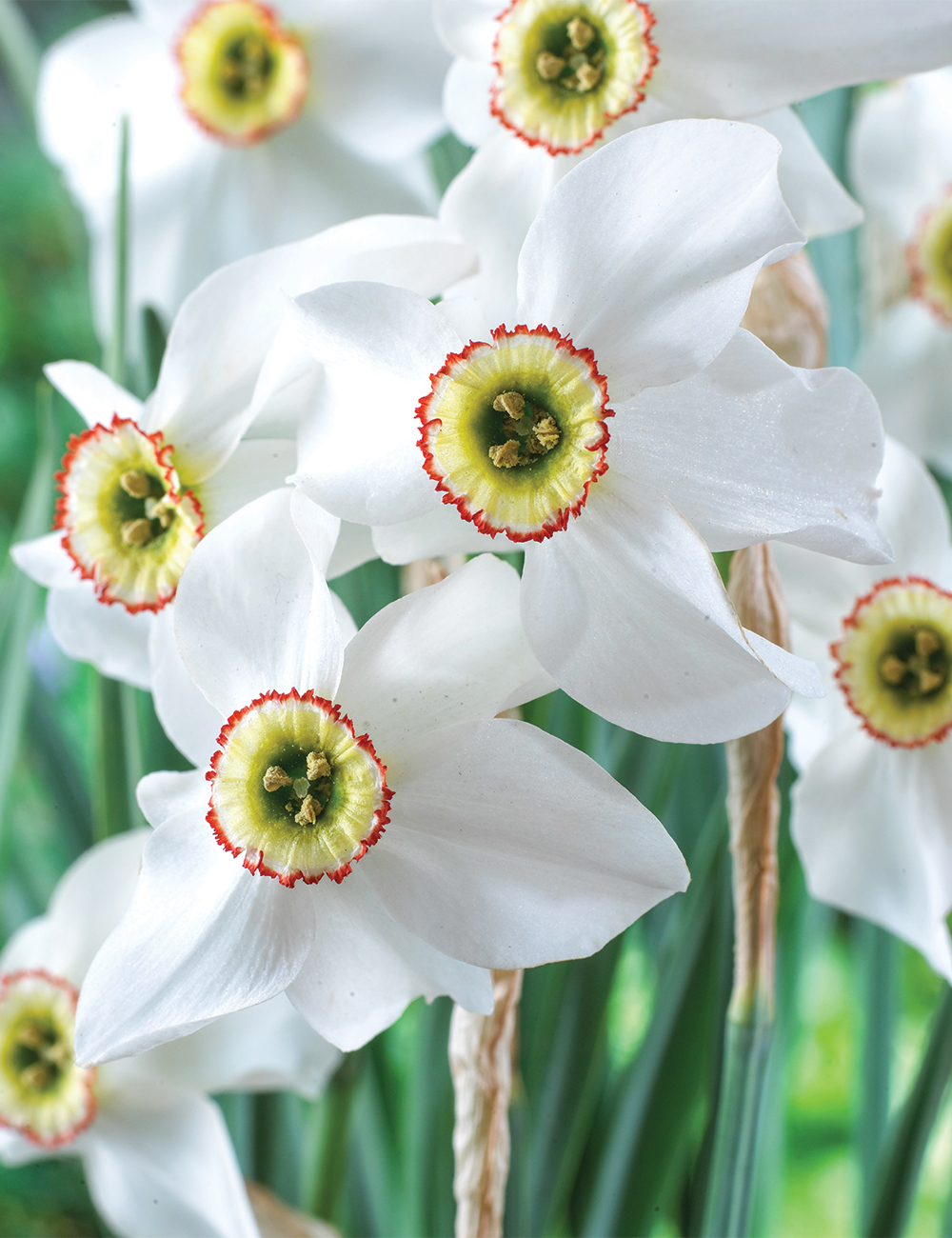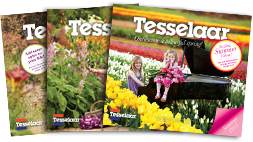


Pheasant's Eye Poets Daffodil
Something special.
This product is currently out of stock and unavailable.




The bright white perianth stretches to 4cm across, with an elegant recurve and gentle green blush. The crowning, crenate, cup is almost red with a yellow to chartreuse green base. The leaves are pendent which adds a point of difference to this stunning daffodil.
Narcissus poeticus var. recurvus holds the prestigious RHS Award of Garden Merit, so you know it not only looks good, but is easy to garden. It grows to around 40-50cm tall. It has also taken out the America Daffodil Societies esteemed Wister Award for garden durability.
Pheasant Eye Daffodils really are princely blooms, it is hard to sing their praises loud enough, just know if we were in the same room, I could talk about how good they are for a loooong time. They have been in cultivation for hundreds of years which is a testament to their ease of care and vitality. Their breathtaking flowers last an age and pick well, their leaves are narrow and upright.
Great in the garden, these Daffodils are easy to grow and can be left in the ground to perennialise. Their natural, classic beauty never goes out of style. Pheasant Eye Daffodils like plenty of sun and a well drained soil.
Pheasant Eye Daffodils are easy, they like the simple things in life; plenty of sun and a well drained soil.
Plant Daffodil bulbs three times as deep as the bulb is high, with the pointy end up. This depth will help protect them from heat and soil erosion, as well as providing strength for the stem.
Space your Daffodils 5-10cm or apart. Planting them closer will give a more dramatic display. We like to plant ours three to a hole as this creates in instant effect. When you use this method in garden beds, with smaller clumps of bulbs more often, you get the joy of repetition. Another benefit is that when the foliage dies back it is more inconspicuous.
Once the flowering has finished, it is ideal to remove the flower stem; simply snap or snip the finished flower off. This has two advantages; the first is that it stops the plant focusing on unnecessary seed production, so you can increase your bulb numbers and size, secondly it looks better.
Allow the foliage to remain until it has yellowed, this is when the bulbs are gathering energy and nutrients for next year’s blooms. Keep the plants relatively moist during this time, adding a little general purpose fertiliser will help provide for next year’s display. Daffodils appreciate Potash and slow release fertilisers which are low in nitrogen (so you get more flowers and less foliage). Don’t be too heavy handed, you won’t need much as they are not heavy feeders.
Daffodil, Narcissus poeticus var. recurvus is a division 13, Wild Variant type Daffodil.
IN POTS:
This is our recommendation for the best display, keeping in mind bulbs look best when planted nice and close together. Our other top tip is to add a winter flower annual such as Violas to the pot to help you remember to water when the bulb is growing roots below the soil over winter.
14cm/6” = 5 bulbs
20cm/8” = 10 bulbs
25cm/10” = 15 bulbs
See here for hints and tips on growing bulbs in pots.
See here for more hints and tips:
Top Ten Tips on How to Plant your Spring Bulbs in Pots
Supplied as: Bulbs
Size: na
| Code | DAFRC |
|---|---|
| Botantical name | Narcissus poeticus var. recurvus |
| Height | 30-55cm |
| Width | 10-15cm |
| Flowers | Late season |
| Climate | Cool to Mediterranean |
| Availability | Australia wide |
| Frost hardiness | Fully Hardy |
| Aspect | Full Sun to Semi Shade |
| Supplied as | Bulbs |
| Size | na |
| Water needs | 1 |

